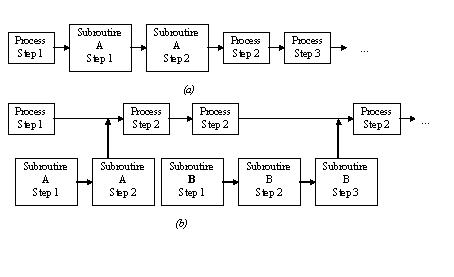TEC 5970/INT 5970 Problem Solving
Problem Solving Technique IV: Story Board
Walt Disney is credited with the development of the story board. When he made his feature length animated pictures, he started by outlining the story on a board that ran the length of the wall. He and his associates would then fill in various substories and details. The format allowed them enough flexibility to try different ideas, change their minds, rearrange events, and see how it would logically fit in the story line. As they worked in the details, the complete story developed on the story board.
The story board is similar to a flow chart, but its format allows more attention to details. It works well in outlining a process for both initial setup and problem solving. A flexible structure such as a cork-board wall is effective, but chalkboards, marker-boards, and even scotch tape and chart papers may be used effectively. Process problems can be tracked on the story board from their point of discovery in the process back to their root cause.
The following figure shows two typical construction pattern of a story board. Part (a) includes the subroutines in the main process, which is more suitable for less complicated process. Subroutines are separated from the main process in part (b), which suits for highly sophisticated process. Color coding subroutines in either structure can also be helpful.

Story Board Patterns
When a story board is going to be developed, brainstorming and teamwork are necessary ingredients. If a new process is being developed or an existing process is being outlined for troubleshooting, a diverse team with representatives from all phases of the process should be involved. Just as with the other problem solving tools, it is important to have ideas and questions from different viewpoints.
School of Technology
College of Business & Applied Sciences
Eastern Illinois University